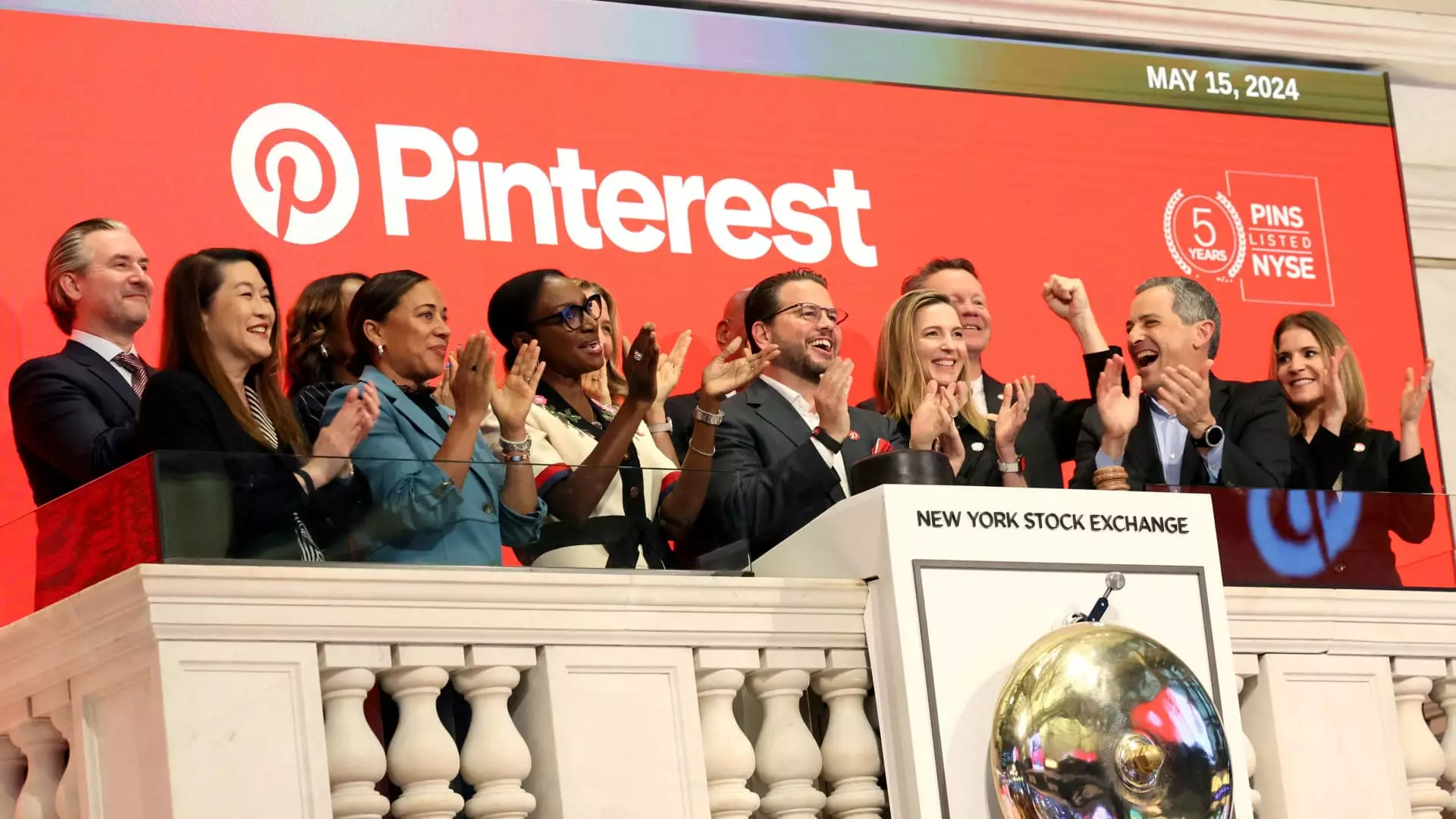On Thursday, Pinterest’s shares experienced a significant plummet, dropping as much as 15% in response to the company’s fourth-quarter revenue forecast, which was surprisingly lower than market expectations. Despite delivering a solid performance in its third-quarter earnings report—where it managed to exceed both revenue and earnings per share (EPS) forecasts—this disheartening guidance has raised eyebrows within financial circles. The reported revenue of $898 million beat the anticipated $896 million, while adjusted earnings of 40 cents surpassed the prediction of 34 cents. However, it was the future projection that led to investor anxiety.
The fourth-quarter revenue guidance provided by Pinterest is estimated to be between $1.125 billion and $1.145 billion, with the midpoint of $1.135 billion falling short of analysts’ predictions of $1.143 billion. This misalignment has triggered doubts about Pinterest’s growth trajectory, especially in a fiercely competitive social media landscape where user engagement and advertising revenue are paramount.
Pinterest’s Chief Financial Officer, Julia Donnelly, indicated that the ongoing challenges faced by advertisers within the food and beverage sector are a key contributor to this downturn. This sector constitutes a significant portion of the consumer packaged goods market, and its struggles have had a cascading impact on Pinterest’s overall sales performance. Donnelly’s remarks suggest that the slump is likely to persist into the fourth quarter, raising concerns about the sustainability of Pinterest’s revenue growth.
Moreover, the company’s net income showed a dramatic increase of 354% year-over-year, reaching $30.56 million. Yet, this juxtaposition of increased income against a backdrop of declining share prices indicates a disconnect between immediate financial performance and long-term investor confidence. Additionally, Pinterest’s operational costs rose by 17%, climbing to $904 million in the third quarter. This increase has been attributed to significant investments in research and development, particularly in hiring talent skilled in artificial intelligence.
The social media platform’s earnings report comes in the wake of several notable announcements from other tech giants in the online advertising space. For instance, Amazon’s advertising business enjoyed a 19% year-over-year increase, generating $14.3 billion in revenue. Similarly, Meta Platforms, the parent company of Facebook, reported a 19% rise in sales to $40.59 billion, even though it experienced a slight drop in shares due to disappointing user growth numbers.
Meanwhile, Alphabet, the parent company of Google, revealed a 10% increase in advertising sales, totaling $65.85 billion, effectively outpacing Pinterest in terms of market share and investor confidence. In stark contrast, Reddit experienced a staggering 68% sales surge, with Snap reporting a 15% revenue growth. The contrasting fortunes of these companies underscore the competitive nature of the advertising sector.
In an effort to mitigate shareholder concerns, Pinterest announced a $2 billion share buyback program. This strategic move indicates that the board acknowledges the need to bolster investor trust amid fluctuating stock prices. On the surface, share buybacks can enhance earnings per share by reducing the number of shares outstanding, potentially offering a temporary relief to jittery investors.
Nevertheless, while share repurchases can provide a short-term boost to stock performance, they do not address the underlying challenges the company faces—most notably, its reliance on a sector that is currently struggling with advertising expenditure. Additionally, the commitment to invest in AI and R&D, while promising in the long-term perspective, may further strain resources in the immediate future.
While Pinterest’s recent earnings report reflects a company that has made strides in several areas, the stock’s significant drop points to a more nuanced reality fraught with challenges. The lower-than-expected revenue guidance and sector-specific weaknesses cast shadows over its otherwise positive financial performance. As the landscape of social media advertising continues to evolve, Pinterest finds itself at a critical crossroads, where maintaining investor confidence will require not only strategic foresight but tangible results in overcoming industry hurdles. As we watch the company’s next moves, stakeholders will be keenly focused on how it navigates these tumultuous waters.

